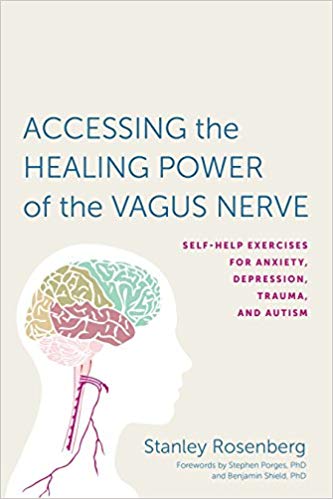This post is a bit of a change from my usual posts because I’m not writing about photography, nature, beauty, or joy. I don’t usually write about taming high anxiety. But I keep getting gentle reminders from my soul that I need to share this because it might be helpful to someone.
Taming High Anxiety
You may not realize this about me, but I am a high anxiety kind of person. This surprises some people who do not know me well. I can’t tell you how many times someone has told me, “You are such a calm person,” and I think “What???” Now, I understand that I may have appeared calm on the outside because my response to stress was to freeze myself on the inside.
Frozen on the inside looks like calm on the outside to many people.
As a teenager I literally trembled all over when I was feeling highly anxious. I learned to contain those trembles without showing them on the outside. Unfortunately, all I did was contain them and hide them; I did not deal with their cause because I didn’t know how.
I’ve been focusing on mind-body practices for a long time and I feel that over time I’ve learned how to calm myself and gotten less and less hijacked (frozen) because of anxiety. But I never felt completely without anxiety.
Then I found this book about the vagus nerve and learned a whole lot about the part the vagus nerve can play in calming us or in shutting us down (freezing in my terminology). There is an exercise in this book that I began doing a few months ago that makes an amazing difference for me in taming high anxiety. (I’ll share it later.)
The material in this book is pretty accessible but it also contains a lot of information about cranial nerves and other anatomy information that I skimmed over in my reading. You don’t need to read the entire book to get the benefits of doing this exercise. In fact you don’t need to read the book at all to try the exercise. I’ll try to summarize a little of what I’ve learned in layman’s terms and explalin how doing a single 2-minute practice I learned from the book has helped me in taming high anxiety.
Polyvagal Theory
I’m not going to try to explain it fully because I don’t fully understand it. But what I do know is that the vagus nerve has a huge part to play in how we respond to stress and anxiety.
The vagus nerve has two branches, the dorsal and the ventral branch. Both branches of the vagus nerve can calm the body but they do it in different ways.
Shutdown, or freeze-or-faint, occurs through the dorsal branch of the vagus nerve. This reaction can feel like fatigued muscles and lightheadedness. When the dorsal vagal nerve shuts down the body, it can move us into immobility (freezing). In addition to affecting the heart and lungs, the dorsal branch affects body functioning below the diaphragm and is involved in digestive issues. (This may explain some of the digestive issues that I’ve struggled with for my entire adult life and frequent lightheadedness that affected me from adolescence until my late-40’s.)
The ventral branch of the vagus nerve affects body functioning above the diaphragm. This is the branch that serves the social engagement system. The ventral vagus nerve dampens the body’s regularly active state. When it gets shutdown we lose our ability for full social engagement.
We can get stuck in a stress state
Social interaction with other people where we feel safe often restores our ability to return from stress or shutdown to social engagement. But when we are hijacked by stress sometimes we are unable to engage in social interaction. The actual situation may be over; we have stopped running or fighting, and we are now free of the threat or danger—but our nervous system can become stuck in the past, and remain in a state of fight, flight, or freeze (dissociation)
The exercise I learned from Rosenberg’s book brings me back to myself, even when I don’t think I’ve gone away. It has become my standby tool in taming high anxiety. When I first tried it I noticed my strong physiological response to it but it has taken time for me to learn how doing the exercise regularly helps keep me balanced. Things that I’ve noticed:
- When I do the exercise, my sinuses open up and my eyes water. I don’t know why but I know that it is a sign that I have effectively engaged my vagus nerve. I yawn so widely that I sometimes think I might dis-locate my jaw.
- I sleep more soundly if I do the exercise regularly. If I skip doing it for a few days I will have a night when I simply cannot stay asleep. Once I start doing the exercise again I sleep more soundly.
- My digestion is better and I have less problems with food reactions and other unpleasant symptoms when I do the exercise regularly.
- If I do the exercise before my weekly Soma Yoga class, I notice that I am much more able to relax deeply into the work.
The Exercise
- Lie down on your bed or on the floor.
- Lace your fingers together and place them behind your head.
- With your head facing straight up, turn your eyes only to the right (do not turn your head). Keep looking to the right (for 30 seconds to a minute) until you experience an involuntary deep breath, a yawn, or a swallow. (I usually experience a yawn or deep breath). The first time your try this it may take awhile longer but my experience has been that the more often I practice it the sooner I experience the deep breath or yawn.
- Now turn your eyes to the left without turning your head and do the same. Wait for an involuntary deep breath, a yawn, or a swallow.
- I usually repeat this sequence 3-4 times. It takes just 3-4 minutes. I have noticed that when I repeat the exercise 3-4 times my yawns become deeper and larger and the feeling of relaxation afterwards is stronger. After you’re comfortable with the exercise you can do it sitting or standing up as well.
That’s it! It’s so easy!
I wouldn’t be writing about this if I didn’t believe that it has made a huge difference in my stress levels. I’ve been meditating, practicing yoga, and doing other mind-body practices for years. Nothing has had the impact this does and it seems to enhance my meditation practice as well.
Do you need help taming high anxiety? Try this exercise a few times for a week or two and see if it makes a difference for you.
May you walk in beauty.











6 Comments
Bookcollector · November 17, 2019 at 4:19 am
Marilyn, I really appreciate this article. I think I’m going to like this exercise, too. I’ve had high anxiety as long as I can remember, and it’s not fun. But, like you, I’ve learned to manage it (most of the time 🙂 ) using the books we read, music we like, yoga, journaling, and photography. I just want to thank you for taking the time to blog, especially on more difficult and personal subjects, like this one. That takes caring and courage, (BTW, you may think this week’s post isn’t about photography, but your pink, shadowy flowers were the perfect messenger.)
lamorm1 · November 17, 2019 at 3:14 pm
Thanks for your comments Bookcollector. I’m glad that you’re going to give this exercise a try. Hope you find it helpful.
Rita A Peterson · November 20, 2019 at 3:24 pm
I love learning about this! Thanks! I will be using this exercise too! Hugs!
lamorm1 · November 21, 2019 at 4:05 pm
Glad it resonated for you!
Six Questions That Help Me Chill — Marilyn Lamoreux Photography · March 25, 2020 at 4:23 pm
[…] things I’m doing to calm myself are a vagus nerve activation exercise (described in this blog post) and soft belly breathing at least twice a […]
The Impact of Stress — Marilyn Lamoreux Photography · September 12, 2021 at 6:54 pm
[…] relax more and feel better. I’ve shared practices and polyvagal theory information before in Taming High Anxiety and Monday […]